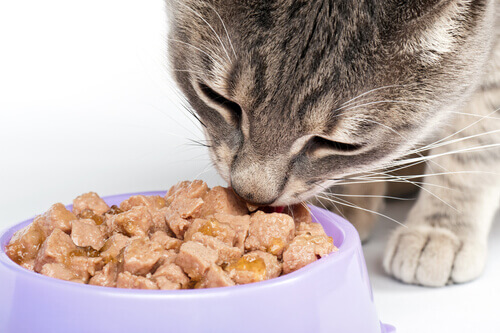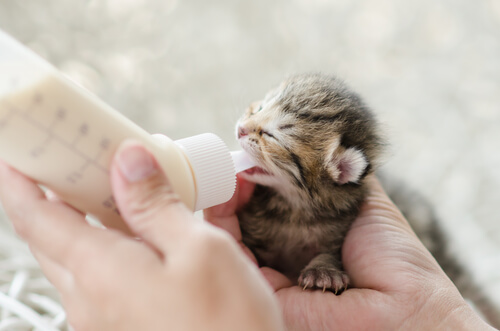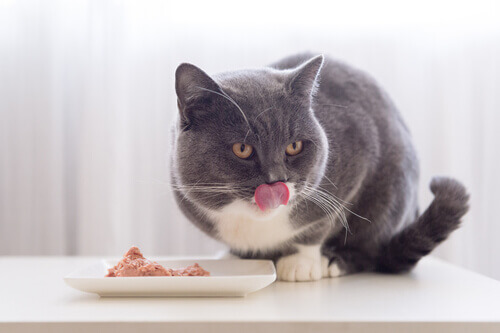A Cat Feeding Guide - How Much and How Often

Today’s article is a cat feeding guide. These animals aren’t given to gluttony — like dogs. Generally, felines eat several times a day and always in small amounts. The main thing to know here is how much food your cat should eat in every meal.
A cat feeding guide
Felines have specific nutritional needs and these needs must be adequately met to provide them with optimal physical and mental development. The nutrition of newborns, kittens, and adult cats is different; continue reading to find out more about it.
Feeding a newborn cat
Newborn cats require breastfeeding as the milk contains all the essential nutrients their body needs to develop properly.
Unfortunately, many kittens don’t get to do so as people separate them from their mothers too early on. Thus, a lactating cat will require formula milk to meet as many of its nutritional requirements as it can. Keep in mind that their body isn’t yet ready to digest more complex foods, such as animal feed.
It’s easy to find formula milk for cats in most pet stores nowadays but you can easily make a highly nutritious one at home.
Homemade formula milk for baby cats
Ingredients:
- 1 c. lactose-free milk
- 1/2 c. milk cream (preferably with a 40% fat content)
- An egg yolk
- 1 tbsp of pure honey
Preparation:
- Mix all the ingredients until you obtain a yellow liquid that’s a bit denser than regular milk
- Heat the formula milk over steaming water until it reaches a temperature between 96.8ºF and 98.6ºF (you should be able to stick your finger in it and keep it there for several seconds without it burning you)
- Feed the kitten with a sterile syringe or a baby bottle

Feeding a weaned kitten
Kittens go through the weaning period between their third and eighth week of life. In addition to preparing to feed on their own, they begin to socialize during this phase. This is why it’s important to respect the weaning age of an animal before separating them from their mothers.
You’re probably unaware of this, but a cat’s instinct would make it taste the food from its mother’s feeder if they grew up next to her. Hence, you can introduce solid food to them from the 25th day of life.
Make a sort of porridge by mixing their food with warm water or chicken broth. It’s essential for the food to be of excellent quality as it’ll be the basis of their diet.
A cat feeding guide – How much and how many meals
The feline stomach doesn’t have the capacity to store or digest much food during its first four months. This is why kittens must eat between four and six meals a day, and always in small portions.
In addition, kittens need to increase their daily intake of calories and nutrients from their 24th week of life. Therefore, maintain the same daily feedings and add 10 grams of feed to every portion.
The specific amount of food will depend on the nutritional needs of each kitten and the composition of their food. Consult a veterinarian for guidance on the optimal nutrition for your kittens.
A feeding guide for the adult cat
Once a cat reaches the first year of life, it’ll be essential to introduce food intended for adult felines. Furthermore, the amount of food this cat should eat will depend on its size, age, and daily physical activity.

An active and healthy adult kitten usually consumes 0.5 to 0.7 ounces of food for every two pounds of its body weight. Moreover, they should eat it in ten to 20 portions. You can give and take depending on the composition of the food and the cat’s organism.
Finally, by the time the animal reaches seven years old, its metabolism will slow down and its capacity to assimilate proteins and fats will also decrease. Thus, they’ll require special feed designed for older cats. This is because it contains high-quality nutrients and is easy to digest.
In general, leave the food out for your cat all day; they’ll eat when they’re hungry. Do respect the daily amount determined by your veterinarian.
